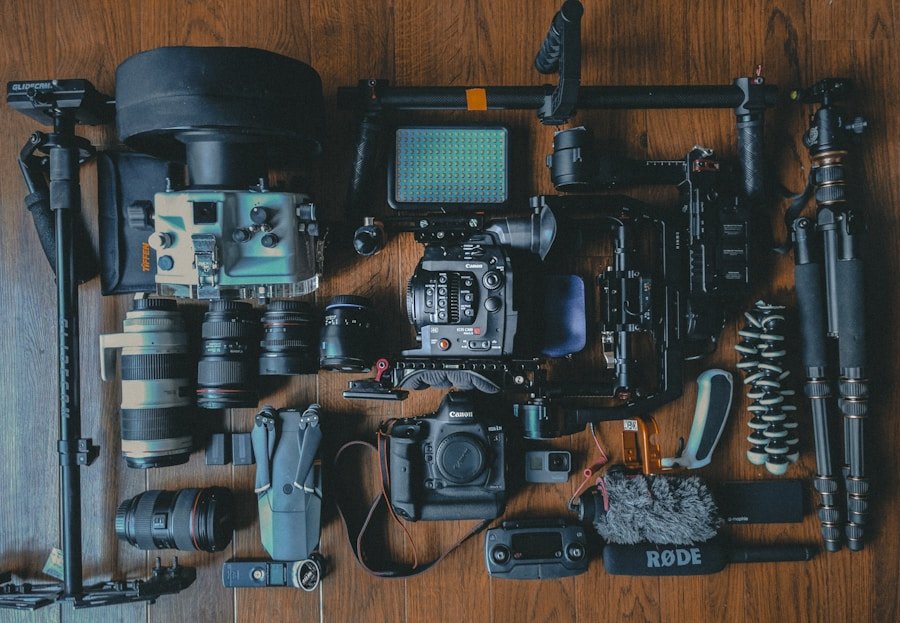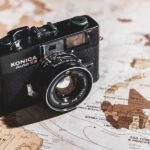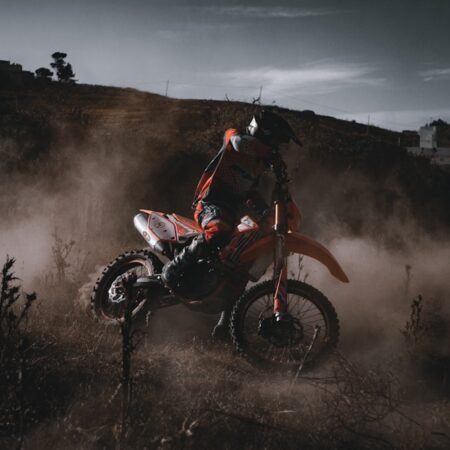When it comes to photography equipment, tripods and monopods are essential tools for achieving stability and capturing high-quality images. A tripod is a three-legged stand that provides a stable base for a camera, while a monopod is a single-legged support that offers some stability but allows for more mobility. Tripods are typically used for long exposure shots, landscape photography, and studio work, while monopods are favored for sports, wildlife, and event photography where mobility is key. Understanding the differences between tripods and monopods is crucial for photographers looking to invest in the right equipment for their specific needs.
Tripods offer maximum stability and support for a camera, making them ideal for situations where long exposure times or heavy lenses are involved. The three legs of a tripod provide a solid foundation, allowing photographers to capture sharp images without the risk of camera shake. On the other hand, monopods offer a more lightweight and portable option for photographers who need to move quickly and easily. While they may not provide the same level of stability as tripods, monopods can still help reduce camera shake and are particularly useful in situations where space is limited or where setting up a tripod is impractical.
Stability and Support: Comparing the Strengths and Weaknesses of Tripods and Monopods
When it comes to stability and support, tripods have a clear advantage over monopods. The three legs of a tripod provide a solid base for a camera, allowing photographers to capture sharp images even in low light conditions or with heavy equipment. This stability is essential for long exposure shots, macro photography, and any situation where a steady hand is required. However, the downside of tripods is their bulkiness and weight, which can make them less convenient for photographers who need to move quickly or travel light.
On the other hand, monopods offer a more lightweight and portable option for photographers who need to maintain some level of stability while on the move. While they may not provide the same level of support as tripods, monopods can still help reduce camera shake and are particularly useful in situations where space is limited or where setting up a tripod is impractical. Additionally, monopods can be used as a walking stick or hiking pole, providing added stability when shooting in outdoor environments. However, they may not be suitable for long exposure shots or situations where maximum stability is required.
Portability and Convenience: Examining the Ease of Use and Mobility of Tripods and Monopods
When it comes to portability and convenience, monopods have a clear advantage over tripods. The single-legged design of a monopod makes it much lighter and more compact than a tripod, making it easier to carry around and set up in tight spaces. This makes monopods ideal for photographers who need to move quickly or travel light, such as sports or wildlife photographers who need to keep up with fast-paced action. Additionally, monopods can be used as a walking stick or hiking pole, providing added stability when shooting in outdoor environments.
On the other hand, tripods are bulkier and heavier than monopods, making them less convenient for photographers who need to move quickly or travel light. However, tripods offer a more stable and secure base for a camera, making them essential for long exposure shots, studio work, and any situation where maximum stability is required. Additionally, some tripods come with features such as adjustable legs, quick-release plates, and ball heads, which can make them easier to set up and use in the field. Ultimately, the choice between tripods and monopods will depend on the specific needs and shooting style of each individual photographer.
Versatility: Exploring the Range of Shooting Situations Where Tripods and Monopods Excel
Both tripods and monopods have their own strengths and weaknesses when it comes to versatility in different shooting situations. Tripods excel in situations where maximum stability is required, such as long exposure shots, macro photography, and studio work. The three-legged design of a tripod provides a solid base for a camera, allowing photographers to capture sharp images without the risk of camera shake. Additionally, some tripods come with features such as adjustable legs, quick-release plates, and ball heads, which can make them more versatile and easier to use in the field.
On the other hand, monopods are favored for situations where mobility is key, such as sports, wildlife, and event photography. The single-legged design of a monopod makes it much lighter and more compact than a tripod, making it easier to carry around and set up in tight spaces. This makes monopods ideal for photographers who need to move quickly or travel light, as they can provide some level of stability while allowing for greater mobility. Additionally, monopods can be used as a walking stick or hiking pole, providing added stability when shooting in outdoor environments. Ultimately, the choice between tripods and monopods will depend on the specific shooting situations and needs of each individual photographer.
Cost and Investment: Considering the Financial Implications of Choosing Between Tripods and Monopods
When it comes to cost and investment, tripods and monopods vary in terms of price and value for money. Tripods are generally more expensive than monopods due to their larger size, heavier construction, and additional features such as adjustable legs, quick-release plates, and ball heads. However, tripods also offer maximum stability and support for a camera, making them essential for long exposure shots, studio work, and any situation where maximum stability is required. Additionally, investing in a high-quality tripod can be seen as a long-term investment that will last for many years and provide reliable support for a wide range of shooting situations.
On the other hand, monopods are generally more affordable than tripods due to their smaller size and simpler construction. While they may not provide the same level of stability as tripods, monopods can still help reduce camera shake and are particularly useful in situations where space is limited or where setting up a tripod is impractical. Additionally, monopods can be used as a walking stick or hiking pole, providing added value for outdoor photographers. Ultimately, the choice between tripods and monopods will depend on the specific budget and shooting needs of each individual photographer.
Expert Opinions: Hearing from Professional Photographers on Their Preference for Tripods or Monopods
Professional photographers have varying opinions on the use of tripods versus monopods in their photography work. Some photographers prefer tripods for their maximum stability and support, especially in situations where long exposure shots or heavy equipment are involved. They appreciate the solid base that tripods provide for their cameras, allowing them to capture sharp images without the risk of camera shake. Additionally, some professional photographers value the additional features that come with certain tripods, such as adjustable legs, quick-release plates, and ball heads, which can make them more versatile and easier to use in the field.
On the other hand, other professional photographers prefer monopods for their lightweight and portable design, especially in situations where mobility is key. They appreciate the ease of use and convenience that monopods offer when they need to move quickly or travel light. Additionally, some professional photographers value the added value that comes with using a monopod as a walking stick or hiking pole in outdoor environments. Ultimately, the preference for tripods or monopods will depend on the specific shooting style and needs of each individual professional photographer.
Making Your Decision: Factors to Consider When Deciding Between Tripods and Monopods for Your Photography Kit
When it comes to making a decision between tripods and monopods for your photography kit, there are several factors to consider. First and foremost, you should assess your specific shooting style and needs to determine which tool will best suit your requirements. If you frequently shoot long exposure shots or require maximum stability for heavy equipment, then a tripod may be the best option for you. On the other hand, if you need to move quickly or travel light while maintaining some level of stability, then a monopod may be more suitable for your needs.
Additionally, you should consider your budget and investment in photography equipment when deciding between tripods and monopods. Tripods are generally more expensive than monopods due to their larger size and additional features, so you should weigh the cost against the value that each tool will provide for your photography work. Furthermore, you should take into account the versatility of each tool in different shooting situations to determine which one will best serve your needs. Ultimately, the decision between tripods and monopods will depend on your individual preferences and requirements as a photographer.








